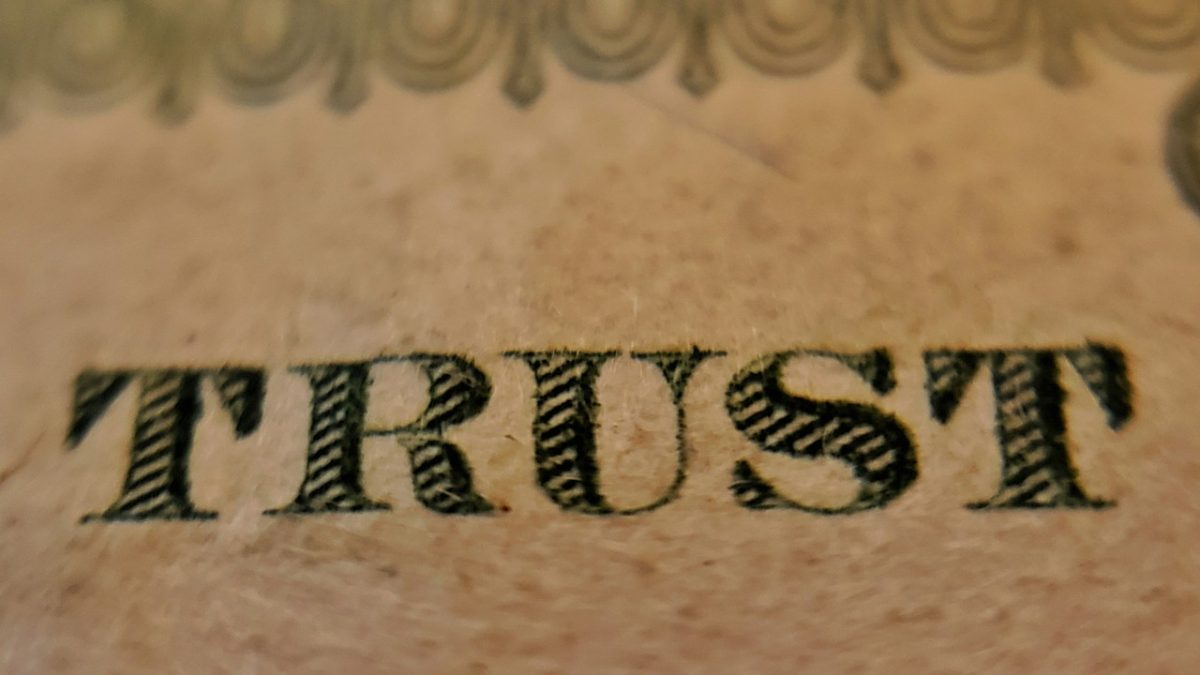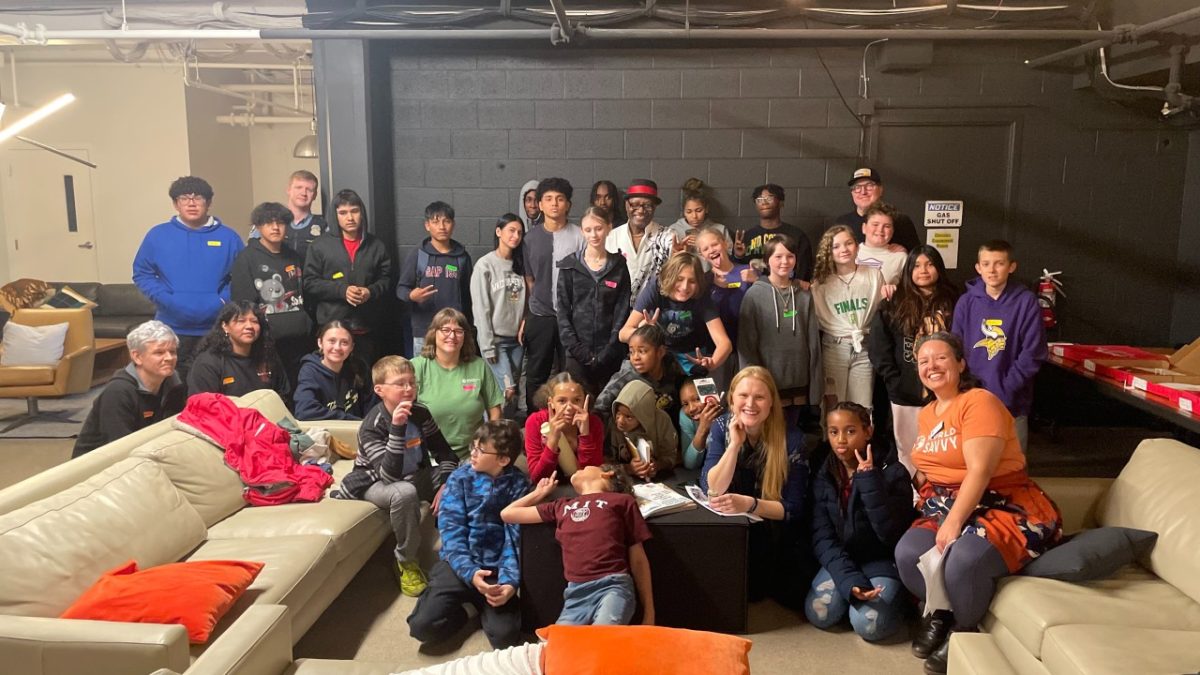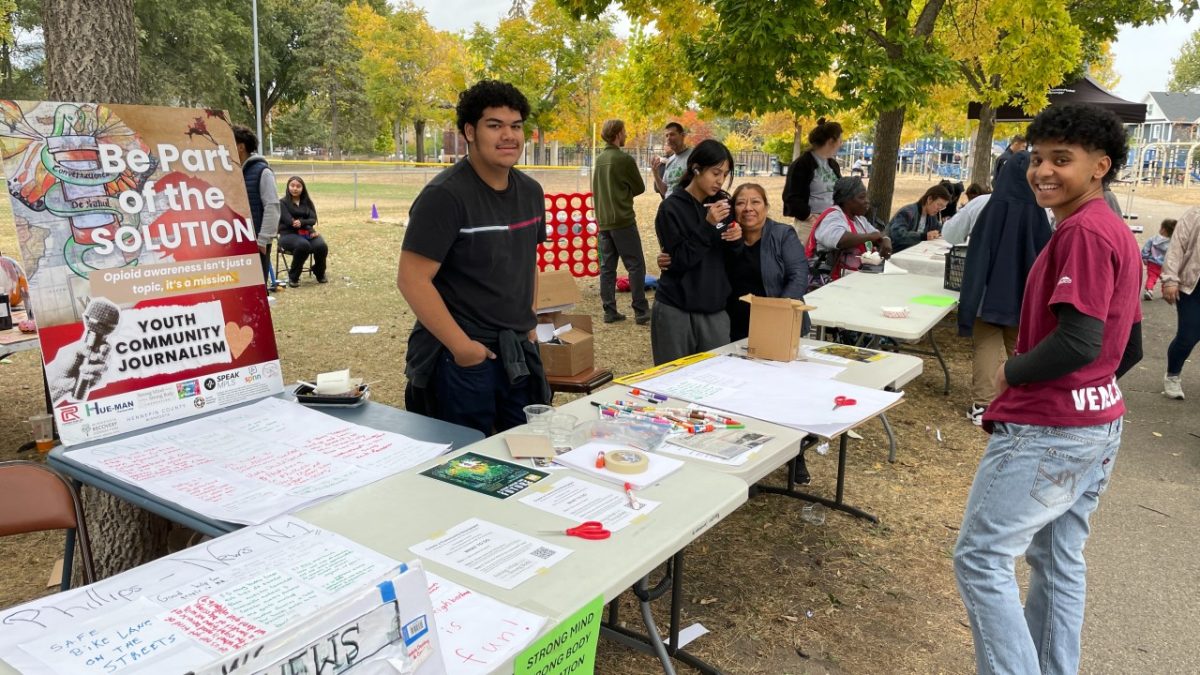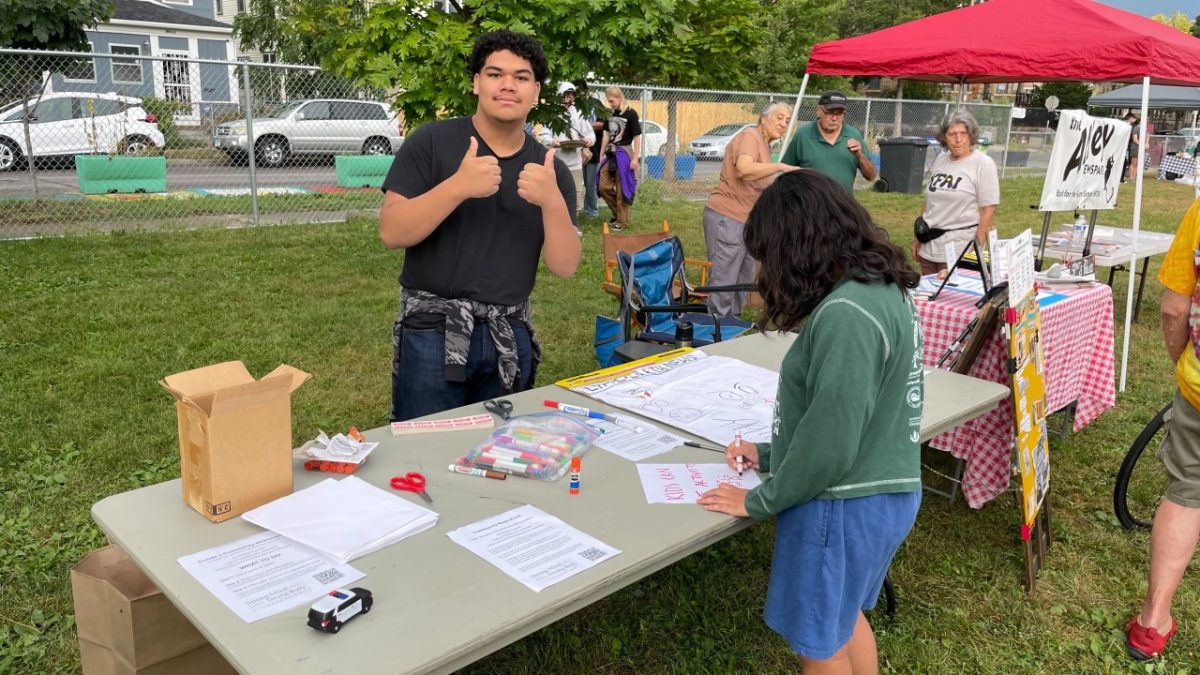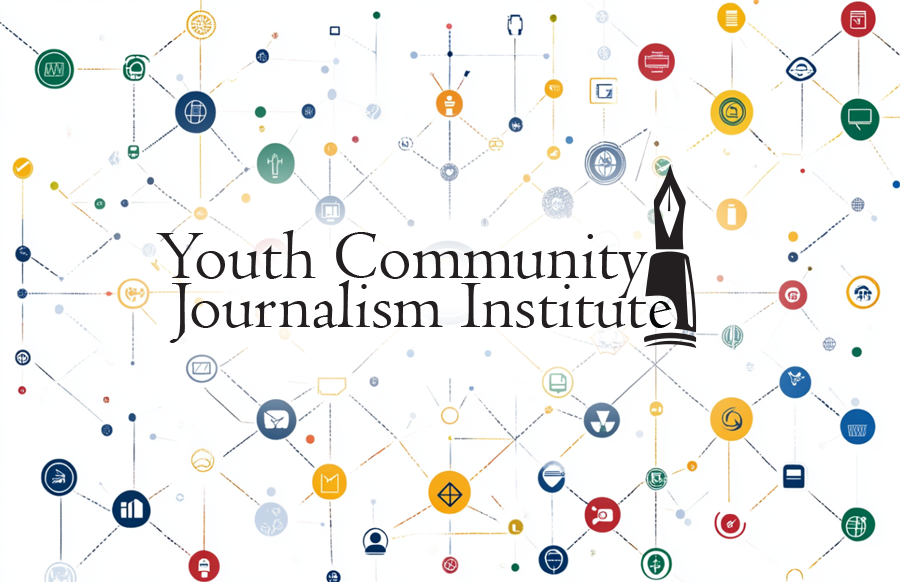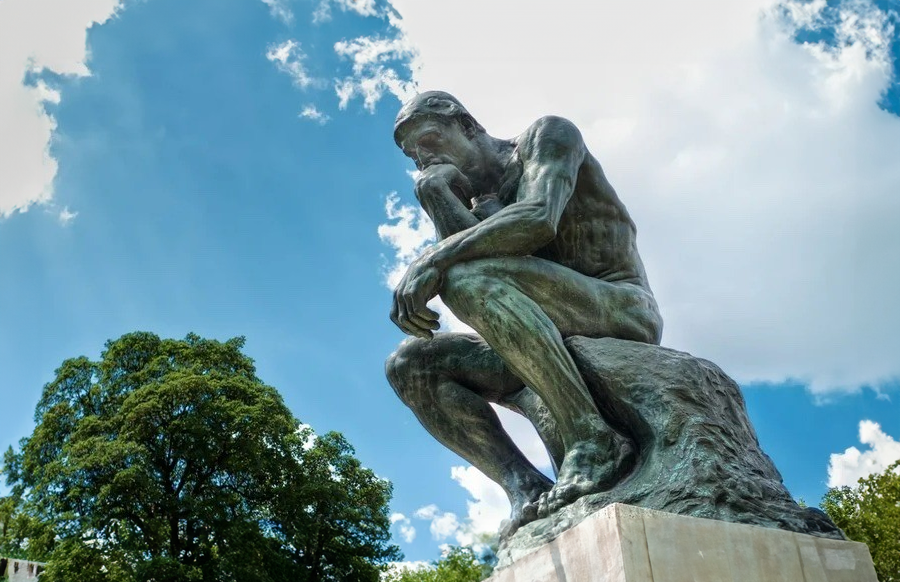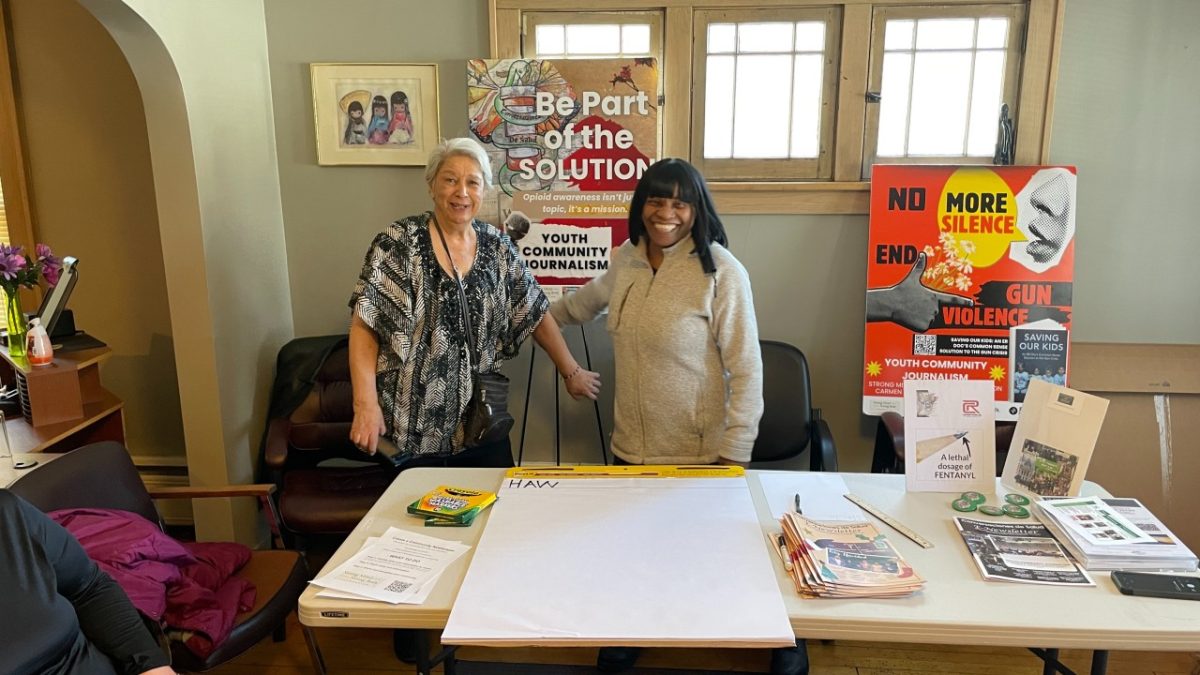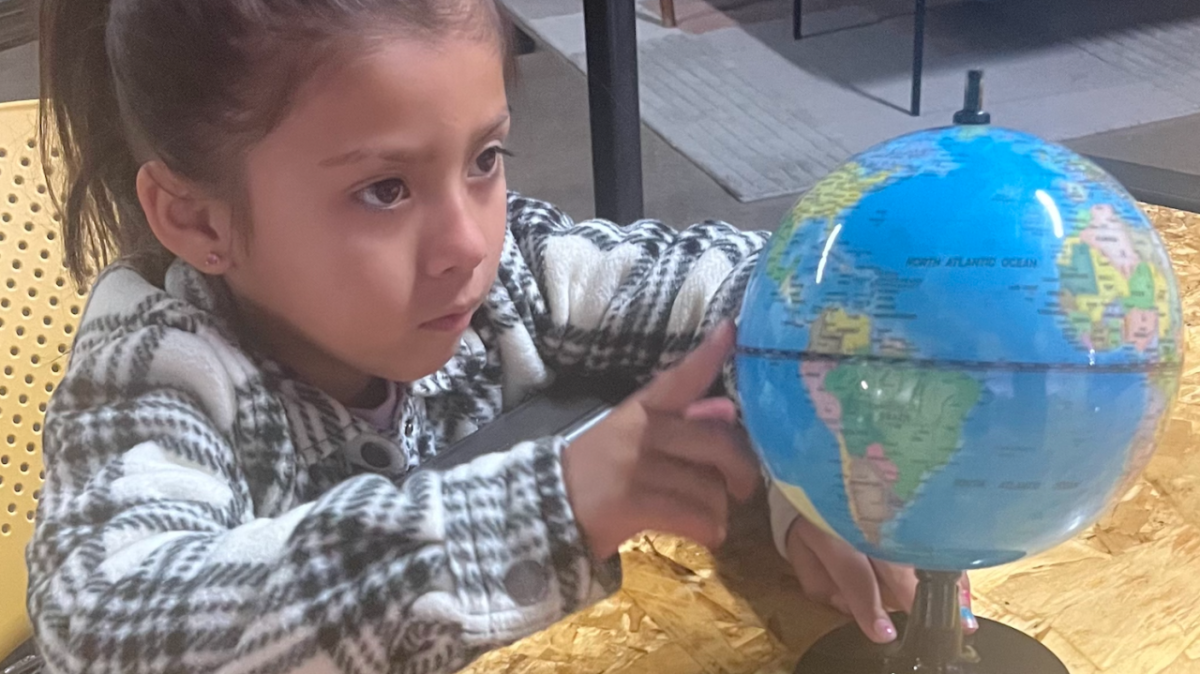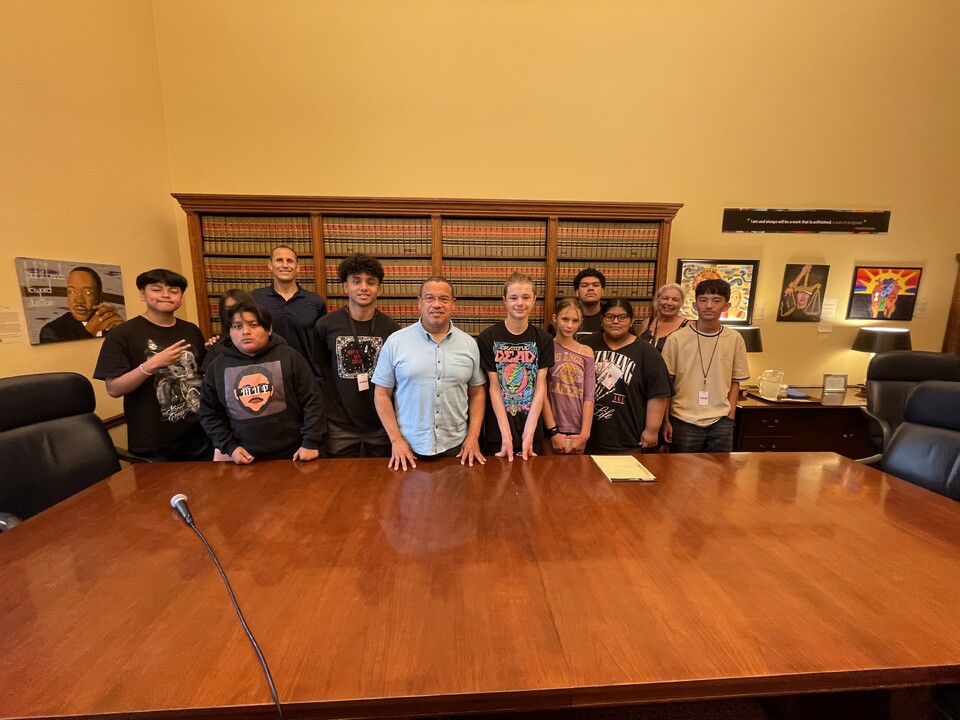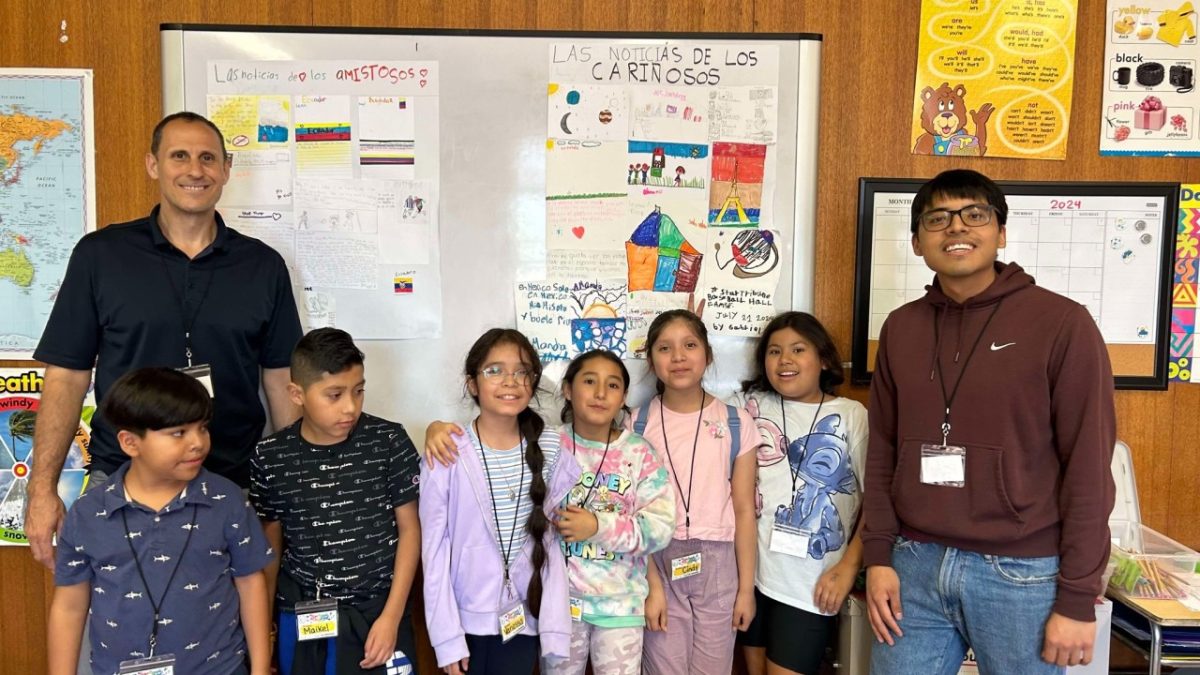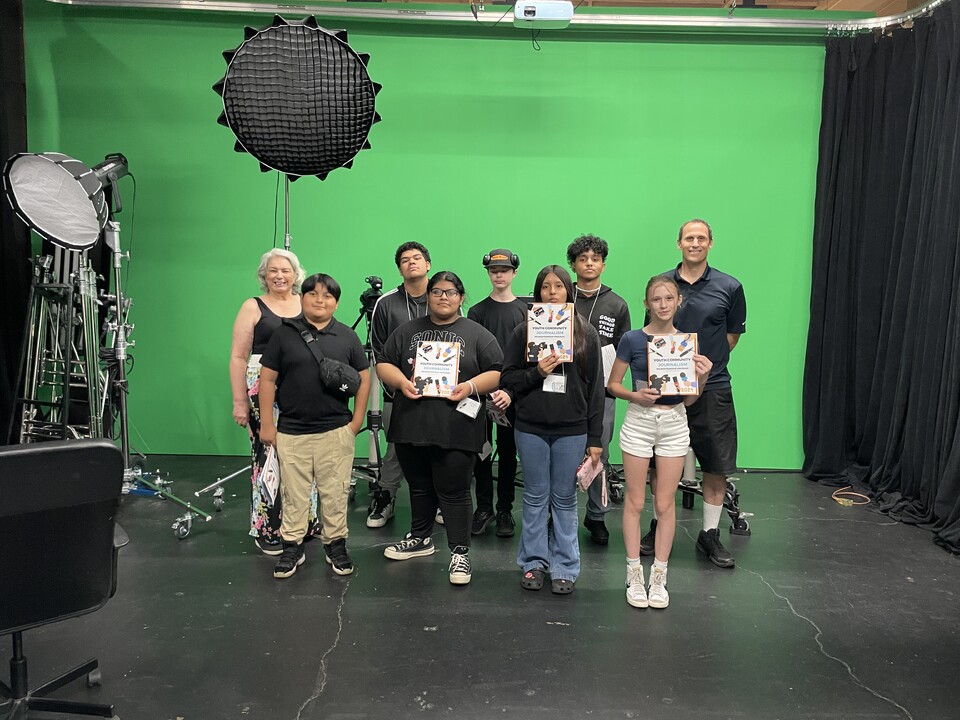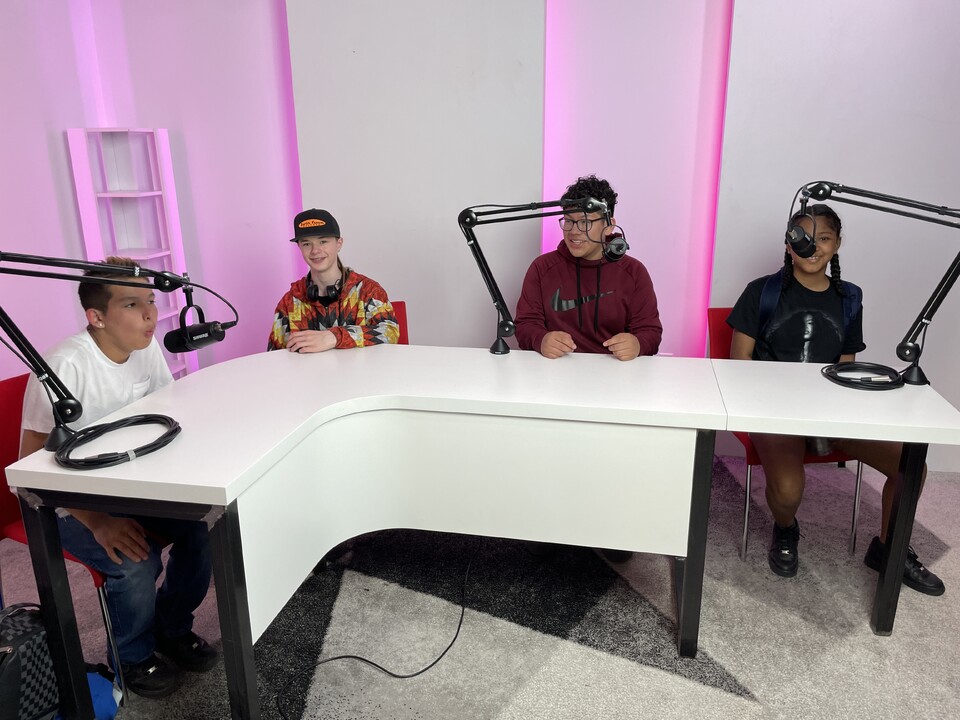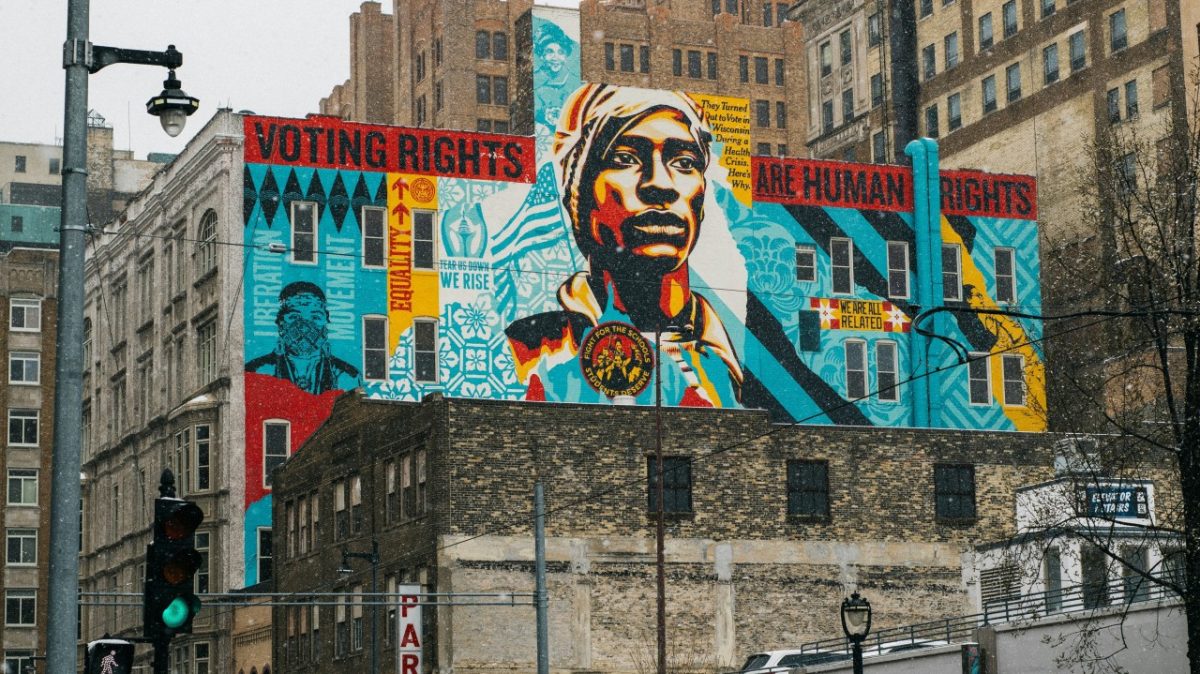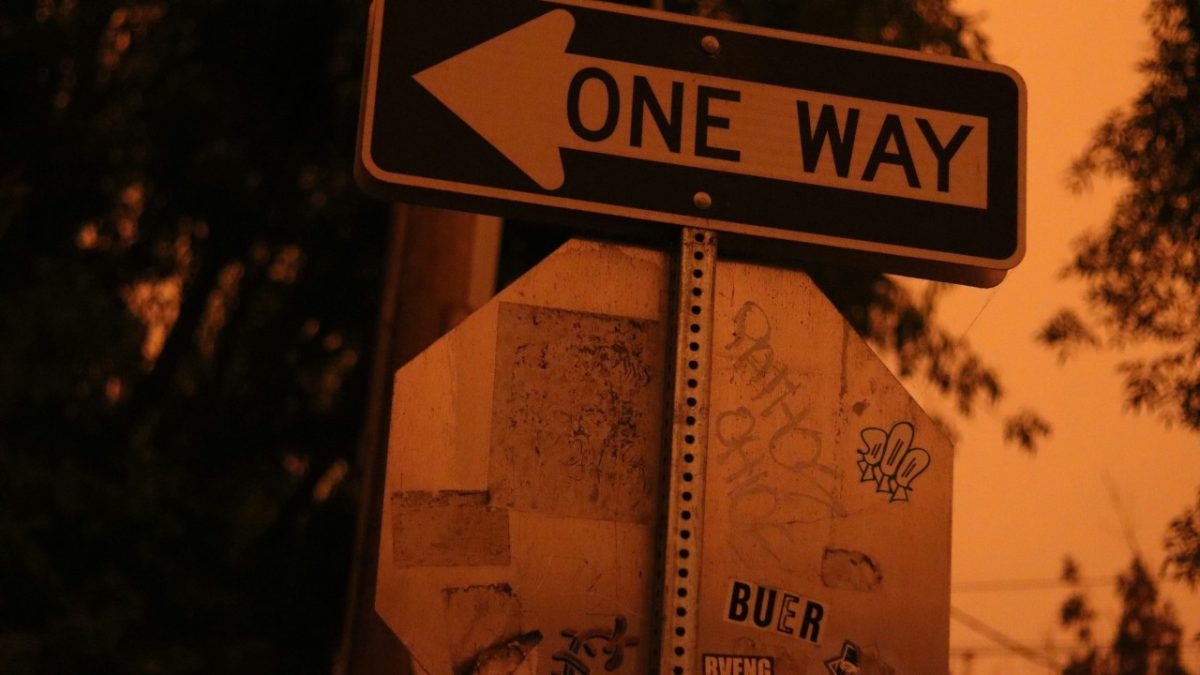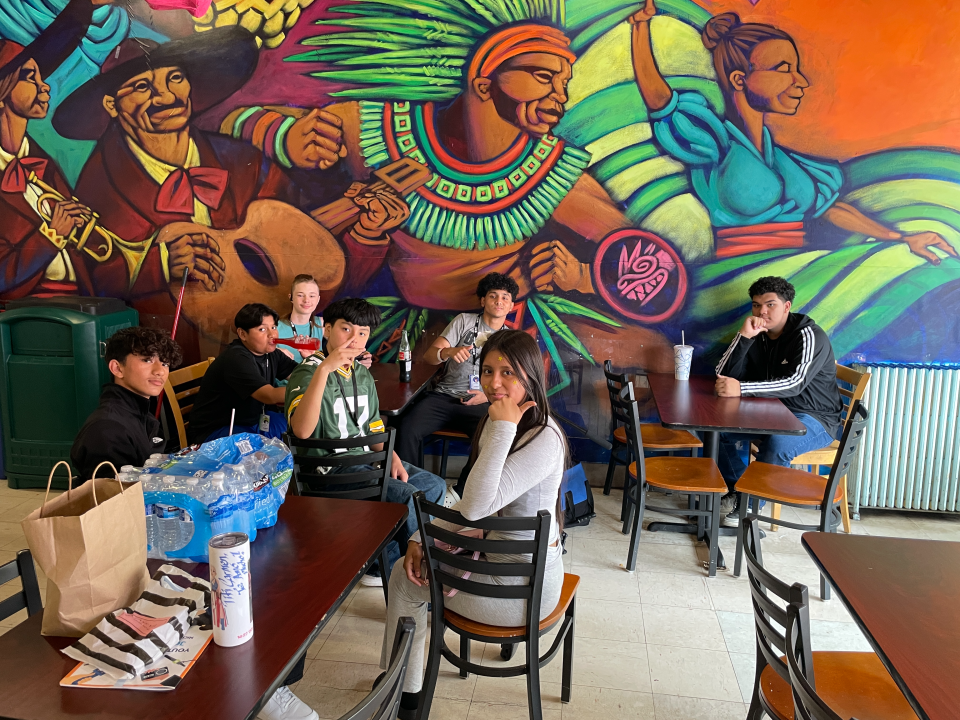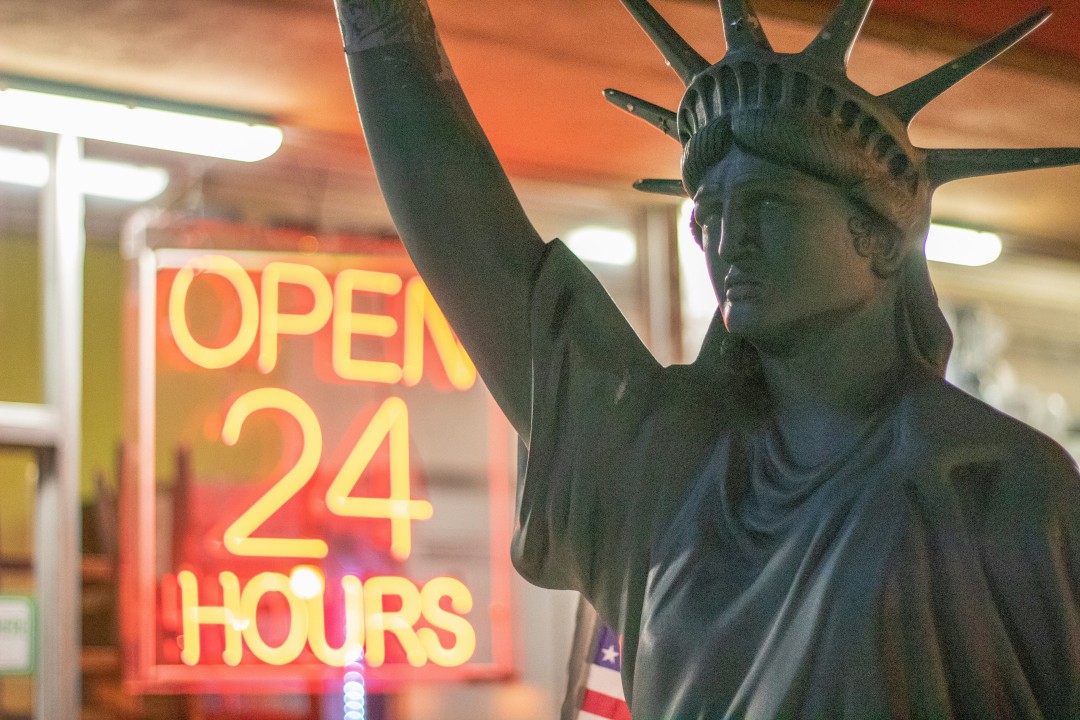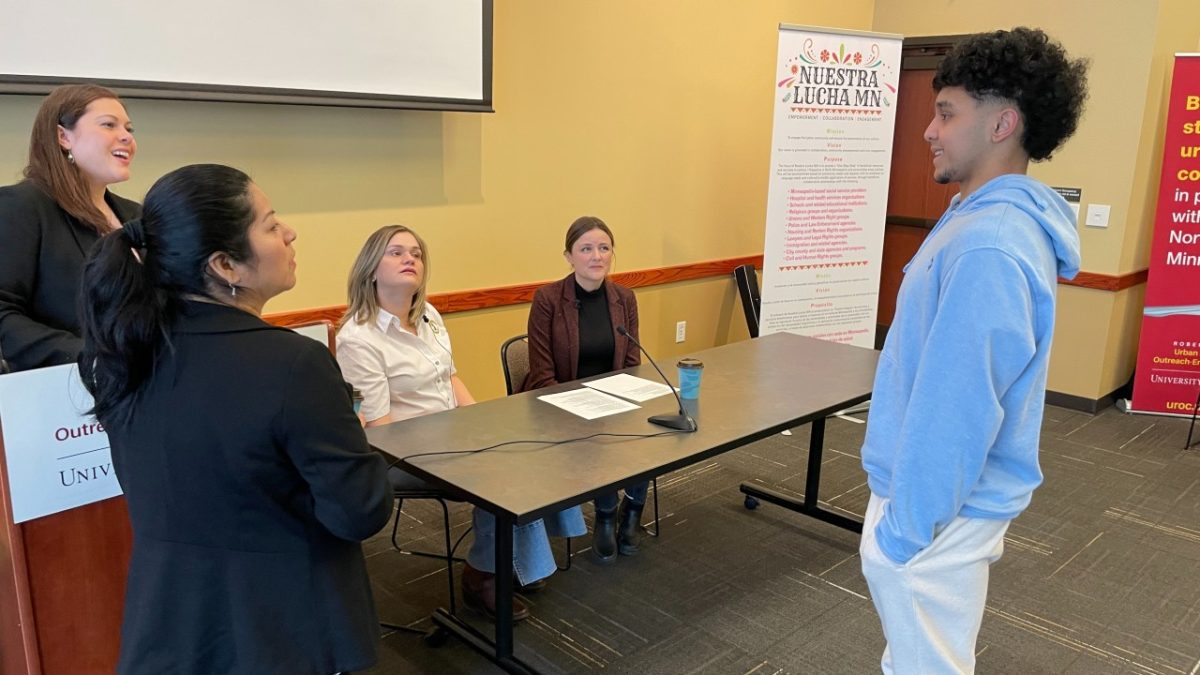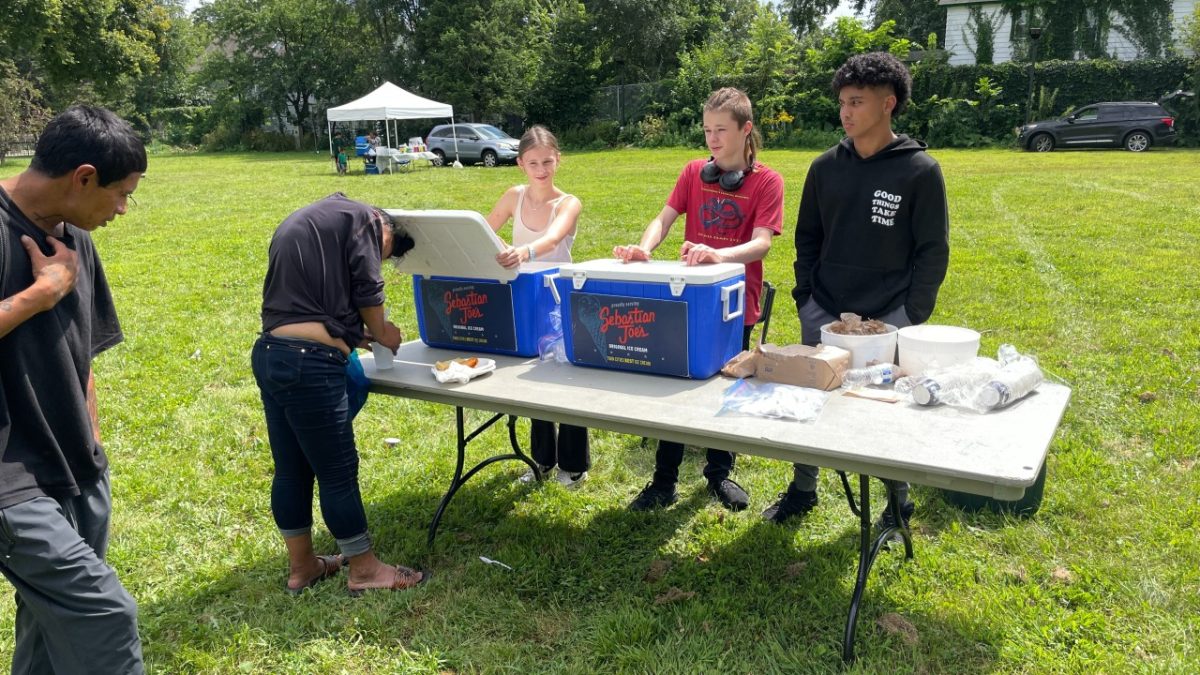Challenges bring opportunity. So do connections.
The other day, I met a Minneapolis fire inspections field operations manager who told me the city’s fire department is understaffed.
“I think it’s because people don’t want to serve their community the way they used to,” said the man, who also served 22 years in the United States military with tours of duty in Iraq, Afghanistan, and Syria.
“People are not as interested in giving back to the community or serving their community,” he added. “Fire service is a trade. It also takes courage.”
“What is a solution?” I asked.
“It starts in the home,” he said. “We need to shift our value and priorities.”
This conversation took place on Saturday, Feb. 8, at the Community Connections Conference, an annual free event that connects residents of Minneapolis, community groups, neighborhoods, and local government.
This year’s conference featured over 250 booths from the City of Minneapolisand other community groups. It brought together more than 1,000 community members from across the city to celebrate our communities, share ideas, and build connections.
Residents and city leaders interacted, discussed challenges, and celebrated neighborhood achievements. Information was shared in multiple languages.
Hands-on workshops and skill-building sessions allowed people to gain knowledge and resources to continue making a difference. The goal was to empower underserved communities and amplify underrepresented voices.
The Strong Mind Strong Body Foundation had a table with youth from our Youth Community Journalism Institute and created a community newspaper with conference attendees. We met dozens of great people doing great things in the community.

The conference was a huge success because it was grounded in the belief that all communities should feel welcome and everyone should have a chance to influence important decisions.
We need to continue working together to connect our neighbors and residents with services and opportunities so that everyone feels a sense of belonging and can achieve their highest potential.

The Power of Community
On Feb. 15, another community event in Minneapolis brought together immigration attorneys and community leaders to provide much-needed clarity and guidance to our immigrant community during these uncertain times.
This event was held at UROC, the University of Minnesota Urban Research and Outreach-Engagement Center, and live-streamed on Facebook by Nuestra Lucha MN, a nonprofit organization that serves the Latino community in Minneapolis and surrounding areas. You can see the live streams here, here, and here.
Expert immigration attorneys shared their time and knowledge, offering valuable insights to help people navigate complex immigration questions with confidence.

Notaries were on hand to notarize Delegation of Parental Authority (DOPA) documents. DOPA is a document parents can sign that gives legal permission to care for their children when they are unable to do so.
This event ensured the community had access to the resources and information they need.
This event was more than just about legal guidance. It was about building trust, offering hope, and reinforcing the power of community.

The focus of Nuestra Lucha MN is to provide a “one-stop shop” for beneficial resources and services to Latinos in north Minneapolis and surrounding areas. This is accomplished based on community needs and requests, with an emphasis on language needs and culturally mindful application of services through collaborative relationships.
Viviana Salazar is the executive director of Nuestra Lucha MN and a civil rights commissioner for the Minneapolis Department of Civil Rights. A week earlier, she was one of the guests on our February “Youth Community Journalism” show about immigration.
Other guests included michelle rivero (director of the Office of Immigrant and Refugee Affairs for Minneaoplis), Dr. Miguel Fiol (Frente de Acción de Latinos en Minnesota), and Dana Alcalá (director of community engagement at Risen Christ Catholic School).
All of them remain hopeful.

“[Young people] are starting to realize what they can do to make things better so I’m really hopeful that the younger generations will be the ones to make that difference,” said Salazar on the show.
“Seeing how the community has come together, I feel like more than ever, everyone has come out and shown their support to immigrants,” said Alcalá. “Imagine that in a few years when all the young kids are in roles in the federal government or in their city, I just can’t Imagine how far it’ll go. That’s what gives me hope.”
“I feel like the older I get the more I realize that we see the same thing but a different day, and what keeps me hopeful is understanding that the more we experience, the more we’re prepared for the next challenges, for what’s to come,” said Rivero. “The other thing that keeps me hopeful is the incredible human potential that I see in people every single day and how exciting it is when you have a connection with someone who’s a stranger. First, they see you as a stranger. But then something happens, and you get to know each other. And that’s so incredible. And we can all have that every single day. And it’s really such a gift.”
“What I get out of all of this is the warmth and appreciation, and to make it simple, the love you get from people when you get together with them,” said Dr. Fiol. “You get down to basics and you feel that connection that people feel you care for them and they care for you. There’s nothing more beautiful than that transmission of love from caring about each other and … the solidarity. Solidarity is a huge word for me, and I think that this kind of historical traumas that countries go through, there is a little bit of a light in the sense that people come together to be people and to support each other and to give each other, and that’s what keeps me going, from meeting to meeting, and doing this kind of thing, is you get more love back than you give.”
Together, We Are Stronger
Working together has never been more important than now.
We need to continue advocating and standing up for those who need it most.
Community connections can help us build stronger communities.
Community journalism can help us build community connections, provide information for communities, and strengthen communities.
Every community needs trusted information about their community. Information is power, but today, not every community has the information they need to have power.

That is why organizations like Nuestra Lucha MN will continue providing information for the community. This information sharing, through in-person events and social media, is a nontraditional form of community journalism.
It is why the Youth Community Journalism Institute at the Strong Mind Strong Body Foundation is creating community solutions newsrooms.
Our mission is to strengthen underserved communities through community journalism.
The Strong Mind Strong Body Foundation started the Youth Community Journalism Institute in March 2024 to make journalism opportunities accessible to all communities.
The Strong Mind Strong Body Foundation, established in 2021, is a youth and community development nonprofit organization based in Minneapolis. With our Youth Community Journalism Institute, we provide community journalism programming for K-12 students to boost literacy, increase media literacy, and spark civic engagement.
Our Youth Community Journalism Institute provides the media and technology tools and training people need to create community newsrooms and use community journalism to create solutions and strengthen their communities.

Unlike traditional newsrooms that often only focus on reporting problems in communities, our community solutions newsrooms are dedicated to creating community solutions by providing information, services, and opportunities that will make communities stronger.
We do this with the community by creating community journalism programs in schools and community organizations. These programs build community newsrooms in communities with the community (from youth to elders) and use community journalism as a tool to create solutions, social good, and positive change in the community.
Our community solutions journalism program at the Youth Community Journalism Institute has five steps:
1. Create an online newspaper for schools or community organizations. A digital newspaper gives youth and their community (students, teachers, parents, neighbors, elders school, organization) a platform to share stories, empower voices, and create positive community change and community solutions.
2. Train teachers/organization leaders on community journalism. Show the community (youth to elders) how to practice community journalism and use the school/organization newspaper to empower the community.
3. Provide advisory community journalism support. We work with each school and organization to support their community journalists (youth, teachers, parents, elders, stakeholders) and community journalism program.
4. Provide community-centered journalism opportunities. These opportunities include youth community journalism video programs, audio programs, community events, internships, apprenticeship programs, entrepreneurial training, paid work opportunities, and special projects to create community solutions.
5. Provide literacy and media literacy education. We want everyone in a community to know how to read and have the ability to navigate our complex media ecosystem as informed global citizens. Our literacy and media literacy education provides the tools, skills, training, resources, and support for schools and organizations to develop confident learners, responsible media consumers and producers, and positive community contributors.
The Strong Mind Strong Body Foundation and the Youth Community Journalism Institute want every community to have their own community solutions newsroom.
As part of youth community journalism work, we have partnered with Carmen Robles and Associates LLC, a community engagement firm in the Twin Cities with expertise in reaching underserved communities and the publisher of Conversaciones de Salud, a monthly digital and print magazine that provides educational and health information for underserved communites across the Twin Cities. Conversaciones de Salud started in 2022 as an e-newsletter and has grown to over 3,000 monthly subscribers. Each issue is 12-25 pages.
Now, youth (ages 14-18) from the youth community journalism team at the Strong Mind Strong Body Foundation’s Youth Community Journalism Institute will be leading all aspects of publishing Conversaciones de Salud, including the reporting, writing, editing, photography, design, marketing, business operations, revenue generation, audience engagement, and events.

The Youth Community Journalism Institute at the Strong Mind Strong Body Foundation, with Carmen Robles and other community partners, will continue to build community, create community connections, and provide workforce development training in community journalism and media production to create 21st-century career pathways for historically marginalized youth ages 14-18.
The Youth Community Journalism Institute has created an actionable and replicable community solutions journalism program that provides the tools and training for youth (grades K-12), schools, and nonprofits to strengthen underserved communities through community journalism.
The Youth Community Journalism Institute is building a trade school model for journalism with Conversaciones de Salud (a monthly digital and print magazine published by Carmen Robles and the premier media partner for the Youth Community Journalism Institute). Working together, we can reach more underserved communities and increase the positive impactof community journalism.
We are training youth to produce a monthly magazine that focuses on community affairs. Our youth community journalism team is growing, and youth from underserved communities (Latino, Black, Asian, Indigenous, immigrant, and refugee communities) will be covering current and relevant local issues in the Twin Cities impacting underserved communities. They will be telling the stories of their communities in all forms of media and providing actionable solutions via print, photos, video, audio, and community events. They are engaging with community leaders and local officials and are learning how to do accountability and solutions journalism. Youth are developing marketable skills in a peer-to-peer apprenticeship learning environment and getting paid to learn community journalism.
Our goal with this community journalism collaborative is to create a long-term sustainable workforce development program with the Youth Community Journalism Institute, Conversaciones de Salud, and community partners that empowers youth with marketable journalism, media, and technology skills. We will strengthen underserved communities in the Twin Cities metro area through community journalism with youth as the driving force.

The Strong Mind Strong Body Foundation created the Youth Community Journalism Institute to strengthen underserved communities through community journalism. With traditional media not meeting the critical information needs of underserved communities and trust in legacy media eroding, the Youth Community Journalism Institute at the Strong Mind Strong Body Foundation has created an actionable and replicable community solutions journalism program that provides the tools and training for youth (grades K-12), schools, and nonprofits to strengthen underserved communities through community journalism.
We are committed to providing the resources and support underserved people need to fill information gaps, amplify underrepresented voices, promote civic engagement, and increase civic health. Our youth community journalism program is in English and Spanish now, and we plan to add more languages so all communities can participate and provide community journalism in their native languages.
We will continue to build our trade school model for journalism with Conversaciones de Salud and community partners such as Nuestra Lucha MN, so all underserved communities can have the opportunity and power to strengthen their communities through community journalism.
Any community can have their own community newsroom, and every community newsroom can build connections by:
✅ Participating in community events
✅ Building inclusive communities
✅ Celebrating differences
✅ Promoting empathy and understanding
✅ Creating opportunities for people to share interests
✅ Creating opportunities for people to feel valued and supported
✅ Creating opportunities for people to feel welcome and accepted
Every event is an opportunity to create connections and opportunities. I made many community connections at the immigration information session with lawyers. Viviana invited me to the event, which served as a nontraditional form of community journalism. I met other Nuestra Lucha MN board members at the event, and they asked me to join their board. We will be working together even more.
This is the power of community journalism and community connections.
A “community connector” bridges gaps within a community by connecting people to resources, support networks, and opportunities. They build relationships and facilitate communication between different groups within the community, serving as a link between people and services.
Community connectors engage in many activities:
✅ Identify community needs
✅ Organize community events and workshops
✅ Provide information about available resources
✅ Advocate for community needs to decision-makers
✅ Connect individuals with relevant support groups or services
✅ Facilitate communication between diverse community members
Many community connectors and community organizations are practicing community journalism. They might not even realize it. They have built large, trusted followings on social media and digital media platforms. With guidance, support, and infrastructure development, they can move their trusted audiences off third-party platforms to their own independent channels.
They can create their own community newsroom, monetize their audiences, and empower their communities.
This is how to build a healthy media ecosystem for everyone.
One connection leads to another and another until we are all connected.
